- Home
- William H. Keith
Warstrider 05 - Netlink Page 2
Warstrider 05 - Netlink Read online
Page 2
The technology of modern warfare was changing so rapidly it was becoming hard for any one person to keep up with it. The changes in warstriders alone in the past twenty-five years—as in the nanotechnic man-machine interface—were astonishing. Companions, for instance…
“I’m getting movement between us and the objective,” Sergeant Lechenko’s voice said quietly over her NCO command channel. “I make it eight… no, ten hostiles, in open deployment.”
Between the Black Phantoms and the complex, shapes were moving… deploying in an unfolding pattern with the speed of thought. “I see them,” she replied. “All units. Prepare to engage!”
Laser fire flicked out toward the assault team as they floated down the gentle slope into the open. Kara checked her sensor readouts and suppressed an inner twinge of dismay. Those warstriders were Imperial Tsurugis, large, powerful, and thoroughly nasty machines. The CMI—Confederation Military Intelligence—had reported the possibility that at least a squadron of Tsurugis was stationed in the Noctis Labyrinthus area of operations, and the raid had been planned with that possibility in mind.
Ten—no, twelve, now—twelve Imperial warstriders were blocking the way. Ten more were deploying closer to the fortress.
“Gok it, Lieutenant!” That was Warstrider Phil Dolan’s mental voice on the tactical link. “We can’t face that mob!”
“We can and we will,” she replied. “Let them come to us. Defensive Plan Echo.” That would put the burden on the hostiles and possibly even the odds a bit. The two sides were trading heavy fire now, with laser beams and particle cannon bolts lacing the air between them. Defensive formation or not, though, the Black Phantom assault force had to keep moving to avoid being pinned or cut off by the enemy movement.
Particle accelerator fire blossomed in blue-white lightnings. Lindsey Smeth’s Cutlass took a direct hit that carved her machine open from prow to dorsal carapace, and Kara felt the inner shock as the other warstrider’s mental link with the squadron snapped off. Damn…!
Her death left a hole in the Phantoms’ right flank, and the enemy striders were pouring through. “Pivot right!” Kara yelled over the link. “Block them! Block them!”
“Block the gokers!” Sergeant Vasily Lechenko echoed. “Newbury! You heard the lieutenant! Move your tail!”
In seconds, Defensive Plan Echo was a swirling confusion of drifting, fire-spitting machines, both lines broken and the battle reduced to isolated pockets of one-on-one and two-on-one. Kara had a tac display of the battle up in a small corner window of her visual field, but there was little to discern there beyond an almost chaotic choreography of moving points of light.
No battle plan ever survives contact with the enemy. Who had said that, she wondered? She’d downloaded that bit of aphoristic military sentiment during her training at NAMA, the New American Military Academy, but she couldn’t at the moment recall the author. The failure was irritating, a small proof that no technology was perfect. What else, she wondered, had been downloaded into her skull during those years that she’d somehow failed to retain?
Kara was twenty-two standard years old; most of her squadron mates were younger. Cephlink downloads made it possible for warriors to be fully programmed before they were eighteen, a fact that let the Confederation military take advantage of the peaks of their mental and physical strength and flexibility. A few—Sergeants Lechenko and Daniels, especially—were older, balancing the reflexes of youth with experience and seasoning. As in every army since the time of Nimrod, NCOs were the military’s heart and backbone.
And like every good officer, Kara had learned to rely on her sergeants.
“Vasily!” she called over her NCO channel. “Take four or five people through there.” She indicated a route with a set of thought symbols overlaid on the tac map. “See if you can get behind them!”
“Right,” Lechenko replied. “Blasey! Pascoe! Newbury! Maslov! With me! Move it! Move it!”
On her map, five of the green blips representing her forces began sliding east, getting between the enemy units and the fortress. That threat might break the impetus of the Imperial attack. She found herself willing the strategy to work.…
The problem was that the enemy had already won, simply by forcing the Phantoms to stop and duel with them. The objective of this raid was the fortress ahead, not battling Imperial warstriders.
Kuso! If those rear-end, fantasy-linked, nullbrained gokers in Ops Planning would just wake up to the possibilities of the Aresynch mission…
“I’ve got a problem here!”
That was Phil Dolan. On the map, it looked as though he’d managed to get himself cut off from the rest of the Phantoms, a single green blip surrounded by reds. Kara was closest; she urged her machine forward, swinging wide to the left to clear Dolan’s stricken machine from her field of fire. There he was… the focus of three Tsurugis who were taking an intent and personal interest in his strider. With a thought, she targeted the nearest Imperial machine and opened up with her particle accelerator cannon. Blue lightnings flared, sun-brilliant and dazzling. One Tsurugi, its floater field failing and smoke spilling from a savage rip in its side, drifted unsteadily down a gentle slope, legs extending. The other two pivoted in midair, bringing their weapons to bear on Kara.
Her PAC was still recharging from the last burst so she switched weapons and triggered a volley of VR-89 rockets, tiny, texture-homing projectiles that sprayed the nearest Tsurugi in a rippling cascade of small, sharp explosions; the last Imperial machine fired a PAC bolt that grazed her starboard side, jolting her back on her floater field and sending a cascade of red warning indicators flashing across one side of her visual field. Spinning and drifting to the left, she returned fire with a burst of nano-D rounds, thumb-sized shells bearing disassembler nanoprogrammed to eat through warstrider armor.
The Tsurugi’s black hull turned blotchy under the assault, the damage chewing across its surface until its nanoflage layers could reprogram and stabilize under the assault By then Kara’s PAC was recharged, and her full-powered bolt of artificial lightning punched through weakened armor like a hard-driven fist through cardboard. The Tsurugi tumbled backward, rolling on its gausslev field until the mags failed and it smashed into the ground.
The other two had limped clear of the immediate area, so Kara turned her attention to Dolan’s crippled strider, which was lying on its side in a shallow ravine. The machine’s name, Philosopher, had been almost entirely scoured away, along with much of the outer, light-sensitive nanoflage layer. Arms extended from Kara’s Matic’s side, long and multiply jointed; nanomorphic clamps grasped hold of Philosopher’s hull, the nano of the clamp welding itself so completely to Dolan’s armor that the two became one. Leaning back against the new weight, she began dragging Dolan’s strider out of the ravine.
“Dolan!” she called over the tacnet. “Are you okay?”
There was no response, but it was possible his com was down. His machine felt dead, however, and he wasn’t able to help. Worse, her own magfields were failing. Red-highlighted messages warned of damage to her gaussfield generator couplings… and the local floater field was degrading as well, the nano-QEC alignments disrupted by the violent electrical groundings of multiple PAC discharges. She overrode a power-shutdown alert, then extended her legs. An electrical failure in her stabilizer system threatened to pitch her to the side, but she compensated with a burst of new-grown circuitry and an emergency patch from her power reserves.
Damn… she was leaking power, bleeding power like the hemorrhage from a deep, slashing wound. Her fusorpack was limping along at eighteen percent of capacity, and the warning flags were coming at her faster than she could deal with. She tugged harder at Philosopher’s fire-savaged bulk, struggling to drag it back into an area where the floater fields were still intact. Even if Dolan’s self-repair systems were down, it might be possible to give him a charge of circuitry nano or even send her own Companion across to recharge his systems a
nd get his gausslev units back on-line. If—
The blast caught her from behind, a searing onslaught of gigajoule laser energy that overloaded her struggling external nano coating and melted its way through her hull like a blowtorch through polystyrene. Diacarb alloy vaporized at that deadly caress. Two of her four legs were sheared off in a flash of raw energy. Unbalanced, Kara’s Matic pivoted around its attachment to Philosopher, Kara tried uploading the mental command to dissolve the nano bond with the other warstrider, but her systems were already in cascade failure, one tripping out the next in a dizzying collapse of all command and control functions. She had time only to glimpse her attackers, a pair of Tsurugis that had managed to slip behind her using the crest of the ridge for cover.
Then her visual field shattered in a burst of static and she was plunged into blackness absolute. She felt the shock as her strider struck the ground, and she wondered if the Imperials would finish her off immediately or leave her where she was, an easy pickup for their legger infantry.
Inside her body now turned coffin, Kara bit off a savage curse. She hated being helpless like this, unable to move, unable to defend herself or even see outside her near-dead warstrider.
Her only chance now was to wake up… and she quickly began uploading the commands that would make that possible.…
Chapter 2
It is now recognized that human technological development does not proceed in steady waves as was first assumed by the primitive models created at the dawn of modern sociohistory during the mid- to late-twentieth century. Instead, it advances in leaps interspersed with long periods of null growth. Technology feeds itself, one advance spawning others in quick succession, but such a pace cannot endure for long. Humans require time to assimilate the resultant changes to their environment.
A prime example of rapid advancement, of course, is the period immediately after the Confederation Rebellion when, in the space of a few decades, contact with alien species propelled Humanity into an entirely new technological milieu.
—Man and Immortality
DR. ROBERT FISK
C.E. 2567
At least, she thought of it as waking up. The sensations of a linkage disconnect were much the same, with a moment’s disorientation as her brain adjusted itself to new input, similar to the groggy and somewhat confused where am I of waking from a dream that had seemed more real than reality. Her surroundings were at once strange and familiar, a close, almost coffinlike enclosure lit solely by the wan gleam of a systems status board in the padding near her head. Now that her bodily sensations were no longer being filtered out by the link, she ached all over, as she always did after a long session piloting a strider. Had her strider been configured as a warflyer, her lifepod would have been filled with a gel to cushion her body against the brutal accelerations demanded by space combat. As it was, even strapped into the pod’s liquid-filled rider couch, she had been left bruised and sore by the shocks and jolts of the past few moments.
Reaching up to her face she unstrapped her LS mask. Theoretically, both her life support needs and her physical connection with the warstrider’s AI could be provided solely by her Companion, of course, but even the most rabid Nagaphiles rarely staked everything on a half kilogram of symbiotic alien nanogoo.
The status board gave light enough to see. Raising her left hand in front of her face, palm up, she concentrated. Her Companion, already sensing her purpose, began emerging almost at once.
Companions were the biotechnic descendents of the Naga-links and cornels of two decades before, living bits of Naga tissue that vastly extended the range of human-machine interfaces, generating an astonishing revolution in human societies from the Core Worlds to the Frontier. Kara’s Companion formed a lump in the palm of her hand, tar-black in the uncertain red-tinted light. A larger mass flowed from the back of her skull onto her shoulder, connected to the first by a thread-slender strand emerging through the skin of her arm and the slick plastic fabric of her skinsuit. The process was painless, almost unfelt save for a feather-light brushing sensation against her skin; individual Companion cells were only slightly larger than the mitochondria of Kara’s cells, so tiny and compactly organized that they could slip right through the skin, tissue, even bone of their human hosts and not disturb a single nerve.
The original Nagas encountered by humans had been huge, as massive as a good-sized planetoid. In their native state, they could be thought of as living nanotech, vast masses of specialized and interconnected cells that absorbed rock and broke it down virtually atom by atom. With human guidance, they could manufacture nearly anything. There were cases on record of inquisitive Nagas so completely patterning injured humans that they’d been able to rebuild them, literally molecule by molecule, and they’d vastly improved on the genetically engineered biotechnic links humans had used to communicate with the alien DalRiss.
A Naga was composed of uncountable trillions of individual “paracells,” each massing a kilogram or two and, when free of its parent, bearing a disturbing resemblance to a shiny black slug the size of someone’s head. “Domesticated” Nagas had learned to bud off smaller and more protean pieces of themselves, creating the Companions. Like their paracell precursors, Companions had no intelligence to speak of on their own; Kara found it convenient to think of them as non-AI computers, capable of storing and manipulating vast amounts of data and, when linked to her own brain, able to greatly extend her own intelligence and abilities.
Within moments, her Companion had left her body completely, save for a tiny percentage of itself still lodged within Kara’s brain, connected to the rest by an almost invisible thread emerging from the back of her head and penetrating her skull unfelt, a lifeline to help it find its way home. The main body of the Companion, its orders already downloaded, reached with pulsing, amoebic ripplings up off her shoulder and slid into the red-lit console.
The warstrider had its own nano for damage control, but its programming wasn’t up to this level of DC. Through her Companion, however, Kara could initiate repairs with more control and with a better understanding of just what was going on inside her vehicle.
An expansion of the idea of human-Naga symbiosis, Companions were fast proving to be the gateway to a radically new way of thinking about tools, about Man, about the universe itself. For centuries, human-machine interfaces had required one or more metal and ceramic receptacles surgically embedded in a person’s head. Computers, ViReality feeds, and other cephlink technologies were accessed by jacking a plug into neck or head sockets. Low-level connections could be made through palm implants, nanogrown traceries of wires and contact plates usually embedded at the heel of the person’s thumb on his nondominant hand.
Within the Hegemony—the Imperium-dominated collection of national and world governments that spanned most of human-colonized space—how many sockets a person had was a mark of states, since only three-socket jackers could be guaranteed full employment jacking equipment, vehicles, or spacecraft. As part of its welfare program, Earth’s government provided free palm interfaces that allowed people to carry out monetary transactions and download government entertainment feeds. In the Frontier, though, things were a bit more freewheeling, but even there sockets were necessary if you wanted to get anywhere in life. And cephlink implants, grown by injections of specially programmed nano that plated out within the sulci of the brain and in the feeds to surgically implanted external sockets, were expensive.
Companions, however, were cheap, self-reproducing half-kilo lumps of living Naga tissue extruded by a planetary Naga that had already had contact with humans. Alive but almost certainly not intelligent or even self-aware, a Companion could slip through the tissues of its human host to achieve an intimate physical interconnectivity with the brain exactly as had the nanoplated layers of metal and plastic in the older style cephlink implants. Instead of having permanently attached sockets, a person with a Naga Companion could form as many so
ckets as necessary, of any size or capacity, simply by willing it; at a thought, part of the skin would refashion itself, in seconds extruding the necessary hardware.
Not everyone, of course, had embraced this new biotechnology. Too many still remembered the Naga as Xenophobes, the mindless destroyers of the colonies at An-Nur, Herakles, and Lung Chi. Others were simply unable to even consider opening their bodies to an alien life-form, a parasite, even if it resembled a lump of tar more than a living organism. Most Japanese, Kara understood, considered such symbiosis to be filthy, akin to rolling around in excrement.
But for those who weren’t disgusted by the idea of forming a partnership with the things, Naga Companions were already transforming the way people did business, exchanged credit, or jacked in for entertainment, work, or education. If the Core Worlds were slow to accept Companions, the Confederation had adopted them with an almost passionate enthusiasm. Possibly, Kara thought, the fact that the Confederation had won its independence from the Imperial Shichiju only twenty-five years before—the two were still engaged in almost constant skirmishing and raiding—had something to do with it.
Already, the economies and the industrial infrastructures of New America and the other Confed worlds had been transformed. A new attitude was sweeping the Frontier, one due largely to the influx of alien biotechnology. B-tech, it was called, the blending of human nanotechnology—the manipulation of individual molecules and atoms on the nanometer scale—with the DalRiss understanding of biological systems and controlled evolution, and the Naga ability to pattern and change living materials literally atom by atom. A host of new products had appeared within the past few decades, products that had changed the way people looked at themselves… and the ways they presented themselves to others. Naga Companions had already changed nearly everything about how New Americans did business, from the use of information—bytes of data—as a currency base to the ability to transform their faces and bodies into things of pure fancy and fantasy.

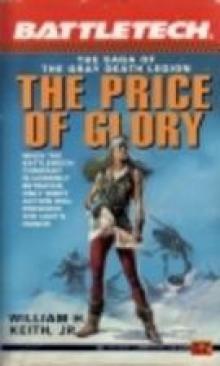 The Price of Glory
The Price of Glory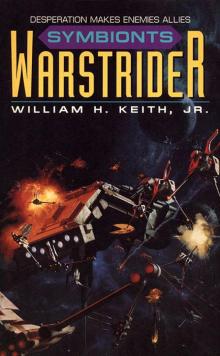 Symbionts
Symbionts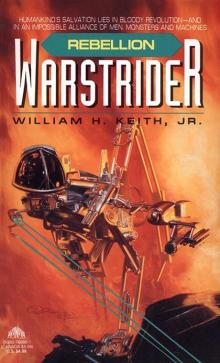 Rebellion
Rebellion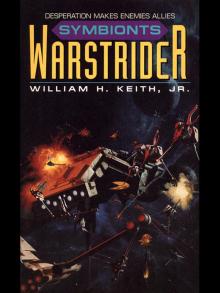 Warstrider 04 - Symbionts
Warstrider 04 - Symbionts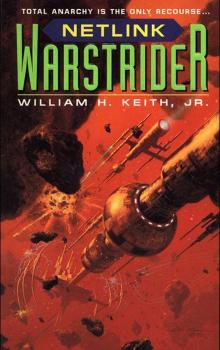 Netlink
Netlink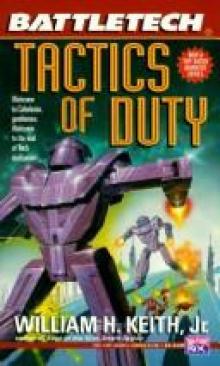 Tactics of Duty
Tactics of Duty Warstrider 06 - Battlemind
Warstrider 06 - Battlemind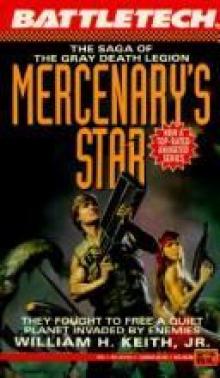 Mercenary's Star
Mercenary's Star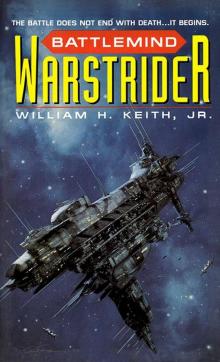 Battlemind
Battlemind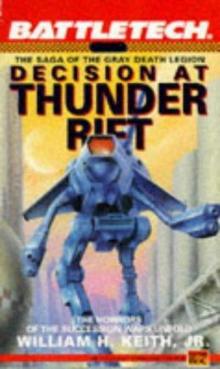 Decision at Thunder Rift
Decision at Thunder Rift Jackers
Jackers Android: Free Fall
Android: Free Fall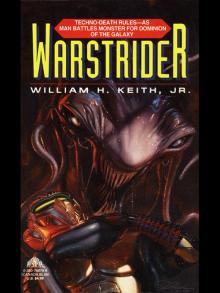 Warstrider 01 - Warstrider
Warstrider 01 - Warstrider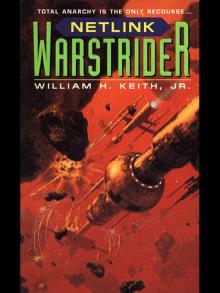 Warstrider 05 - Netlink
Warstrider 05 - Netlink Warstrider
Warstrider